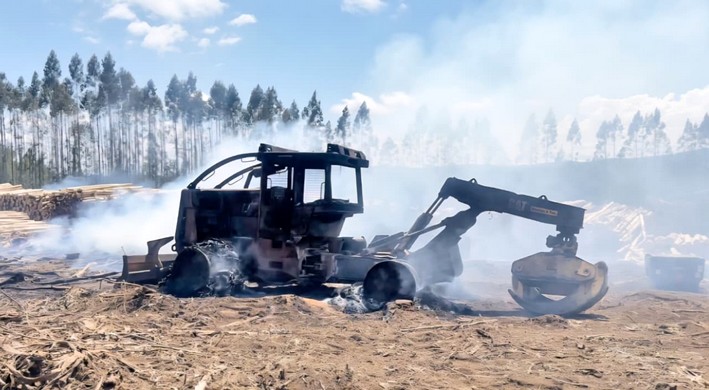Forest Plantations and Sustainable Water Management: The AWS Standard
The relationship between the establishment of forest plantations and water availability in watersheds[1]has become a highly politicized controversy in Chile in recent decades. While it is clear that planted forests tend to use more water than other types of vegetation—such as grasslands, agricultural crops, and parks—it is also true that studies based solely on water losses through evapotranspiration[2]and streamflow volume in watersheds are simplistic. A proper assessment of the impacts of forest plantations on water availability in watersheds should consider more sophisticated analytical tools for decision-making: disciplines such as forest physiology, hydrological and geological processes, as well as climatic variables should be integrated for a better understanding of the phenomenon.
[1]That is, rivers, streams, lakes, groundwater, etc.
[2]Water losses from plant transpiration and also from the soil, in this case from planted forests and ground cover.
In a real climate change scenario, blaming forest plantations as the sole major culprit for water depletion in watersheds is a colossal mistake. There are no single factors that can fully explain the occurrence of a phenomenon—in this case, water scarcity—but rather it results from a multiplicity of factors. For example, some of these include an increase in human population in settlements, types of species used in crops, forest management practices, geological factors, and, of course, climate change. Regarding the establishment of forest plantations and their actual impact on watersheds, it is also known that this impact can be mitigated through proper forest management practices, including density management per hectare, afforestation type, thinning, and rotation cycle management. It should be noted that most of the approximately 2.8 million hectares of forest plantations in Chile are certified under the sustainability standards FSC[1]and CERTFOR[2]. To be certified under these standards, full compliance with Chilean environmental regulations is required, particularly, in the case of watershed management, with Decree No. 82, which establishes the soil, water, and wetlands regulations, mandating protective buffer zones around watercourses that must only be occupied by native species—never by forest plantations. The goal is to prevent watershed depletion, as well as to avoid sediment runoff into these watersheds during forest plantation harvesting periods.
Is there a specific standard for sustainable water management?
While the FSC and CERTFOR forest sustainability standards include strict compliance with environmental laws and regulations among their principles, as well as a specific assessment of the environmental impact of forest management on water resources[3], there is no specific management system that incorporates joint watershed administration among its various users to reduce conflicts and sustainably manage water resources.
[1]Forest Stewardship Council, in Spanish means the "Forest Stewardship Council" standard.
[2]CERTFOR stands for the Chilean forest certification standard, fully aligned with the international PEFC scheme.
[3]In the case of FSC, it corresponds to Principle 6, which states that "forest management shall conserve biological diversity and its associated values, water resources, soils, and fragile and unique ecosystems."
This is where the Alliance for Water Stewardship (AWS[1], for its acronym in English), headquartered in Scotland, comes into play. It defines sustainable water management as "the use of water that is socially equitable, environmentally sustainable, and economically beneficial, achieved through an inclusive stakeholder process involving both site-based and catchment-based actions." For AWS, the watershed is the most important functional unit for sustainable water management, which includes surface and groundwater. The concept of sustainable water management involves much more than individual actions by a forestry company (whether these are plantation units, nurseries, sawmills, pulp plants, etc.) but rather a shared and coordinated management between companies and various users. To achieve this, the AWS standard has been developed, which, according to its websitehttps://a4ws.org/, offers "a credible, applicable global framework for water users to understand their own water use and impacts and work transparently and collaboratively with others toward sustainable water management within the broader catchment context." In other words, if a forestry company—for example, a pulp plant—decides to implement and certify under the AWS standard, it must identify and invite different users upstream and downstream of the watershed where it operates, including stakeholders, for joint resource management.
[1]Alliance for Water Stewardship.
The 5 Steps of the AWS Standard
The AWS standard comprises 5 fundamental steps or principles to ensure its implementation. Step 1 involves gathering and understanding information and identifying shared water management challenges, such as risks, impacts, and common opportunities affecting water supply from the watershed. Step 2 involves organizational management commitment, developing a strategy and objectives for sustainable water management, as well as a water management plan. Step 3 entails implementing the shared water management plan. Step 4 involves evaluating the site's performance (where the organization operates) compared to the actions taken in the action plan. Finally, Step 5 involves disclosing, transparently communicating, and reporting the site's sustainable water management efforts by the organization.
AWS certification lasts 3 years and includes certification and annual follow-up audits by accredited auditors hired by the certification body WSAS[1]. Additionally, there are three certification levels in the AWS standard, varying according to organizational performance: Core, Gold, and Platinum.
Future Challenges for Forest Plantations and Sustainable Water Management
The AWS standard provides a systematic and structured guide for sustainable water management for different types of forestry companies aiming to reduce physical risks (avoiding reduced water supply for their economic activities), reputational risks (improving corporate image), and financial risks (ensuring business continuity). However, the AWS standard is not a panacea, and the forestry industry must be able to address some of the following challenges within the framework of increasing climate change consequences:
- Genetic management to develop plantations that consume less water while maintaining high growth rates.
- Maximizing the use of water sources from flood events.
- Further studies on the effect of certain forestry practices on water resource quality and quantity.
- Reforestation programs in areas degraded by agriculture to restore soils and, in these cases, improve water retention in these zones.
In general, the benefits of implementing the AWS standard include greater efficiency, enhanced risk mitigation, increased staff capacity/motivation, strengthened stakeholder relationships, and building trust with local communities.
[1]Water Stewardship Assurance Services.

















